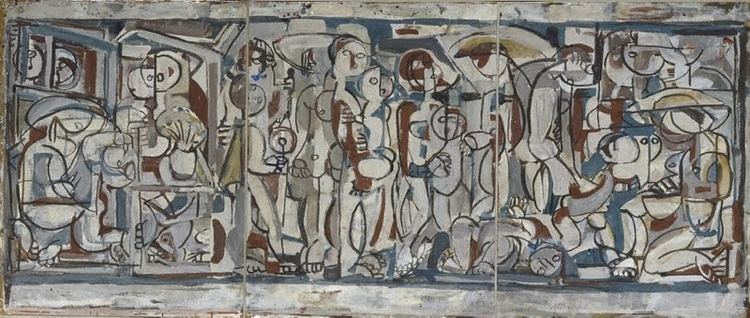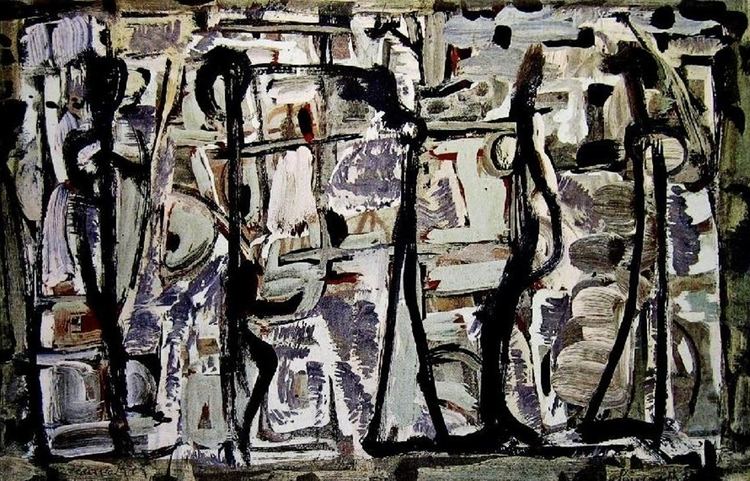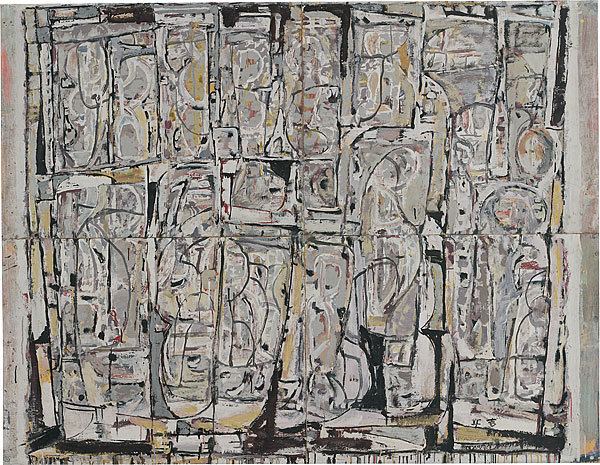Name Ian Fairweather | ||
 | ||
Artwork Composition V, Composition in Orange and Yellow Education SOAS, University of London, Slade School of Fine Art | ||
64 46510 ian fairweather shalimar c 1962
Ian Fairweather (29 September 1891 – 20 May 1974) was a Scottish painter resident in Australia for much of life. He is considered one of the greatest painters in Australia of all time, combining western and Asian influences in his work.
Contents

63 115738 ian fairweather monastery 1961
Life

Ian Fairweather was born in Bridge of Allan, Stirlingshire, Scotland in 1891. His parents returned to India when he was a baby, leaving him in the care of a great-aunt, and he did not see them again until he was 10 years old. He received early schooling at Victoria College in Jersey, in London, and in Champéry, Switzerland, before attending officer training school at Belfast where his rank was second lieutenant.

During World War I he was captured by the Germans in France and spent the next four years in prisoner-of-war camps. While captured, he was permitted to study drawing and Japanese. He was responsible for the illustrations in the POW magazines.

After the war he studied art in the Netherlands, London and Munich. In 1918, he studied at the Royal Academy of Art in The Hague, and then privately with van Mastenbroek. In 1921 he attended the School of Oriental Studies studying Japanese and between 1920 and 1924 he attended the prestigious Slade School of Fine Art in London. From this time on he began a wandering existence travelling to Canada, Shanghai, Bali, Colombo and Australia. Wherever he was, he painted, and mailed paintings to galleries, initially with little commercial success. In 1934, in Melbourne, he joined artists Lina Bryans, Ada Plante, William (Jock) Frater, Ambrose Hallen and others at Darebin Bridge House, a converted coach-house at Darebin owned by Bryans. He began a mural for the Menzies Hotel at this time.
Later that year he left Australia via Sydney and Brisbane for the Philippines. He then travelled to many places including Shanghai, Peking, Manila, Brisbane, Singapore and Calcutta. He served with the British Army in India from 1941 to 1943 and after travelling to Cairns, Cooktown, Melbourne and Brisbane he eventually settled into a studio in Melbourne.
By this time his paintings had become widely known and had already been acquired by the CAS, London and the Tate and Leicester City Gallery.
He moved to Darwin where, after living in abandoned trucks and boats, and probably suffering from depression, he built a raft and embarked on a sole voyage into the open sea. Thought by the Australians to have perished after searches were unsuccessful, he survived and beached on Rote Island in Indonesia. Deported by the Indonesian authorities, he went to London via Singapore and returned to Brisbane in 1953, aged 62. He built a hut on Bribie Island in Queensland, where he lived for the rest of his life except for visits to India and London during the 1960s.
Works
One of his paintings, Monastery, acquired by the National Gallery of Australia, was described by critics at the time as a masterpiece. It was singled out by fellow Australian artist James Gleeson, who said, "He has fashioned an extraordinarily fascinating hybrid from the pictorial traditions of Europe and the calligraphy of China...." (The Sydney Morning Herald, 14 June 1961)
He is one of the few European painters to have drawn extensively from Oceanian art. His style has been described as "a paragon of sophisticated clumsiness". He often used the cheapest materials, such as cardboard or newspaper and poor quality paints, and he lost or damaged many works due to the effects of the tropical climate in which he lived.
Fairweather's work was included in the exhibition "Australian Painting Today" at the Tate Gallery, London and in the same year was selected to represent Australia at the São Paulo Art Biennial.
He is represented in all state galleries in Australia, the Tate Gallery, London, City Gallery, Leicester, and the Ulster Museum, Belfast. Ironically, the only exhibition of his own works he ever saw was a 1964 retrospective at the Queensland Art Gallery.
Murray Bail has written the monograph Fairweather (1981; revised edition 2009).
A painting of Fairweather's sells for in excess of $350,000 today
